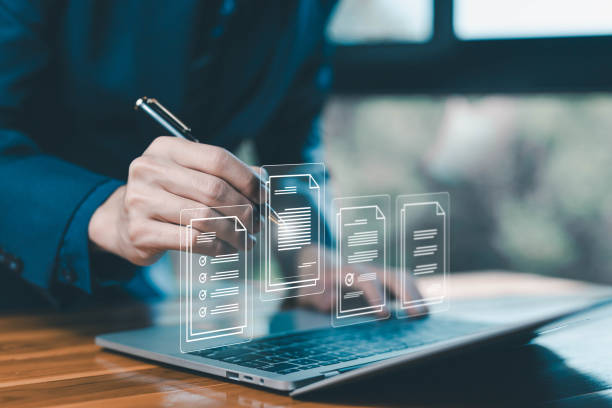Introduction to On-Page SEO: Its Importance and Role in Website Optimization
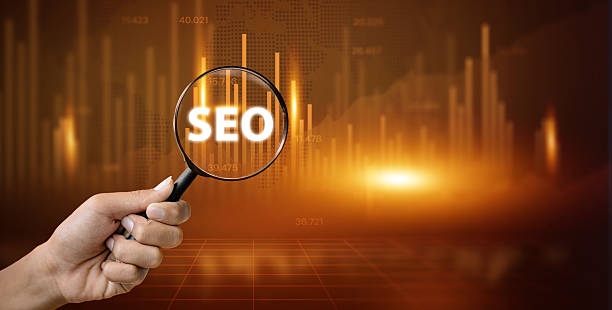
In today’s competitive web world, a strong #online_presence is vital for any business.
This is where the concept of #SEO, or Search Engine Optimization, comes into play.
SEO is divided into two main parts: On-Page SEO and Off-Page SEO.
On-Page SEO, as its name suggests, refers to all the actions performed within your website to improve its ranking in search results.
These actions include optimizing content, site structure, keywords, and technical aspects.
The main goal of On-Page SEO is to help search engines better understand the content of your pages and to provide the best user experience to visitors.
Without a strong On-Page SEO strategy, even the best content in the world might get lost among a sea of information and never be seen by the target audience.
In short, On-Page SEO is the foundation upon which your Off-Page SEO success and overall digital marketing strategy are built.
This section of SEO is educational and explanatory, helping you get acquainted with its basic principles and importance.
Is your company’s website as professional and trustworthy as it should be? With specialized corporate website design by Rasawob, create an online presence that represents your credibility and attracts more customers.
✅ Build a powerful and professional image for your brand
✅ Convert visitors into real customers
⚡ Get a free consultation now!
Key Components of On-Page SEO: Success Factors for Ranking
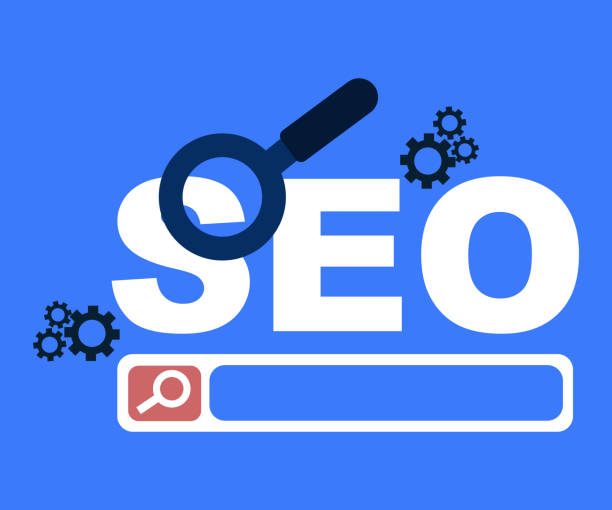
Understanding the key components of On-Page SEO is essential for implementing an effective strategy.
These components include choosing appropriate keywords, optimizing the page title (Title Tag), meta descriptions, correct use of heading tags (H1-H6), image optimization, and URL structure.
Keywords are the cornerstone of any On-Page SEO strategy; they are the phrases users enter into search engines, and your content should be optimized based on them.
Title tags and meta descriptions are also highly important, as they are the first things users see on the search results page and must be attractive to both search engines and users.
Using heading tags logically and hierarchically helps search engines understand the structure and main topic of your content, and also increases text readability for users.
Optimizing images using an Alt tag relevant to the content not only helps images appear in image search but also provides useful information to search engines.
Finally, a clean and descriptive URL structure is more understandable for both users and search engine crawlers.
Adhering to these specialized tips and guidelines will be a significant step in improving your site’s ranking in search results and will ensure powerful On-Page SEO.
Content and Structure Optimization Techniques for On-Page SEO
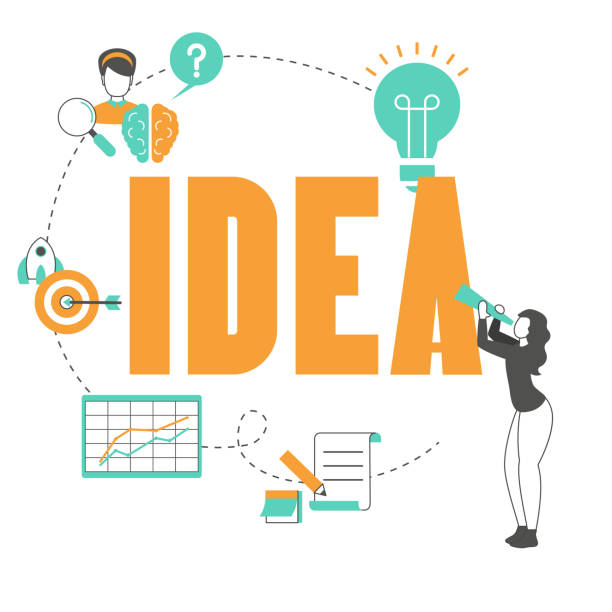
Content is king, but content optimized for On-Page SEO is a king with a crown.
Content optimization doesn’t just mean including keywords; it involves producing valuable, comprehensive, unique, and user-friendly content.
Content length, depth, and topic coverage are among the important factors.
Ensure your content answers users’ questions and provides information beyond their expectations.
Correct use of H1, H2, and H3 tags for organizing content and highlighting headings, in addition to improving readability for the user, also helps search engines better understand the thematic structure of the page.
Using high-quality and optimized images and videos adds visual appeal to the content and increases user engagement.
Furthermore, smart internal linking, which connects related pages of your site, helps users find more information and distributes SEO power across pages.
This specialized and guided approach in On-Page SEO gives your site more credibility and shows search engines that your content is deep and authoritative.
Below is a guide table for optimizing content elements in On-Page SEO:
| On-Page SEO Element | Description | Optimization Tips |
|---|---|---|
| Page Title (Title Tag) | The most important On-Page element, representing the page’s content in search results | Includes main keyword, short and appealing, less than 60 characters |
| Meta Description | A short summary of the page’s content for display in search results | Includes keyword, call to action, maximum 150-160 characters |
| Headings (H1-H6) | Organizing content and highlighting headings | H1 only once per page, includes main keyword; logical use of H2-H6 |
| Textual Content | Main information and added value of the page | Comprehensive and in-depth, responsive to user needs, natural keyword usage |
| Images | Visual elements to increase appeal and content understanding | Compression for speed, use of descriptive Alt Text including keyword |
Technical On-Page SEO: Site Speed and Mobile User Experience
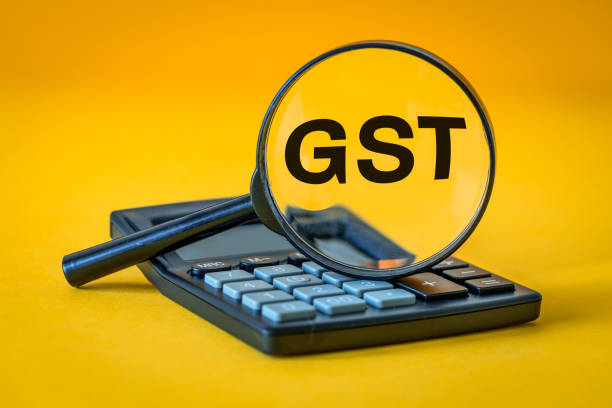
In addition to content, technical aspects also play a vital role in On-Page SEO.
Site loading speed and mobile user experience are among the most important factors that directly affect ranking and user satisfaction.
Search engines like Google consider site speed a significant ranking factor because users prefer to visit websites that load quickly.
To improve site speed, you can use techniques such as image compression, browser caching, code optimization (CSS, JavaScript, HTML), and using a powerful hosting.
Also, given the increasing use of mobile devices to access the internet, a website being mobile-friendly is crucial.
Google penalizes websites that are not optimized for mobile, reducing their rankings.
Responsive Design is the best solution to ensure your site’s compatibility with various devices and screen sizes.
This analytical and specialized approach in On-Page SEO not only helps improve your site’s ranking but also significantly enhances the user experience and keeps users on your site for a longer time.
Don’t forget that a fast and responsive site is a sign of professionalism and attention to users.
Do you know that customers’ first impression of your company is your website? Multiply your business’s credibility with a powerful corporate website from Rasawob!
✅ Custom and eye-catching design tailored to your brand
✅ Improved user experience and increased customer acquisition
⚡ Get a free consultation now!
The Importance of User Experience (UX) in On-Page SEO: The Reward of User Engagement
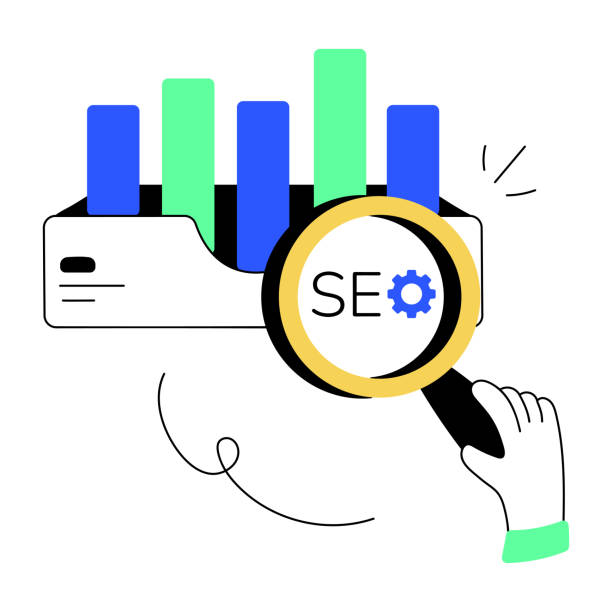
On-Page SEO is not just about satisfying search engines; it’s equally, if not more, about satisfying the end-users.
User Experience (UX) plays a very significant role in the success of an On-Page SEO strategy.
A website with an attractive visual design, easy navigation, and accessible content encourages users to spend more time on it and view more pages.
This high engagement sends positive signals to search engines, such as a low Bounce Rate and high Dwell Time.
When users are satisfied with your site, their likelihood of returning and sharing your content on social media increases, all of which contribute to improved SEO rankings.
Clean visual design, readable fonts, appropriate white space, and clear Call to Actions (CTAs) are all factors that help improve UX.
Ensuring that users can easily access the information they need and have a clear path to achieve their goals on the site is crucial.
This engaging and analytical aspect of On-Page SEO shows how user satisfaction can directly impact your site’s ranking.
Investing in UX improvement is an investment in the future of your On-Page SEO and the success of your online business.
Strategic Internal Linking for Improving SEO Structure and Flow
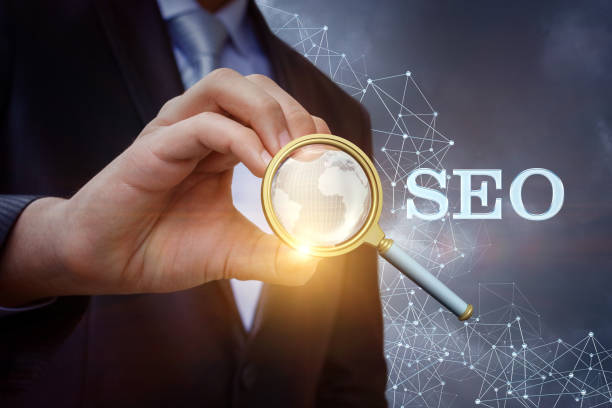
Internal Linking is one of the most powerful tools available to On-Page SEO specialists.
This process means creating links from one page on your website to another page on the same website.
The importance of internal linking has three main aspects: Firstly, it helps search engines better understand your website’s structure and crawl and index your pages more efficiently.
Secondly, it helps distribute “link value” or Link Equity throughout the website.
Pages that receive links from higher-authority pages can themselves perform better in rankings.
Thirdly, it improves the user experience; users can easily navigate from one page to another related page and gain more information, which leads to increased time on site and reduced bounce rate.
When performing internal linking, use descriptive and keyword-relevant Anchor Text.
Avoid linking to unrelated pages and ensure your links appear natural and helpful.
A hierarchical and logical internal linking structure can significantly increase the On-Page SEO power of your site.
This is an explanatory guide to maximizing the potential of internal links to improve your site’s ranking in search results.
Monitoring and Analyzing On-Page SEO Performance with Various Tools
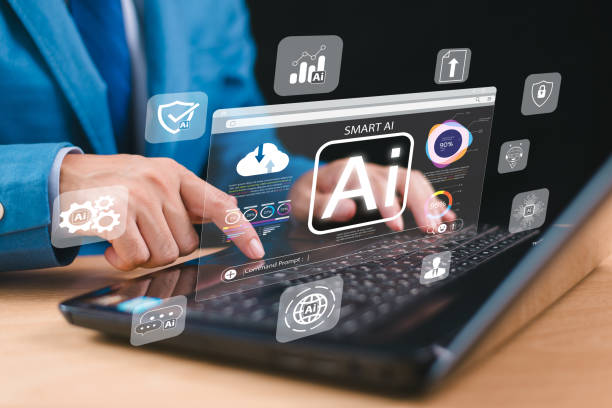
After implementing On-Page SEO strategies, the next critical step is to monitor and analyze their performance.
Without continuous analysis, you will never know which of your actions have been effective and which require further optimization.
Various tools like Google Search Console and Google Analytics are invaluable resources for this purpose.
Google Search Console allows you to check your site’s performance in search results, including the keywords it’s visible for, crawl errors, indexing issues, and internal and external links.
Google Analytics provides more detailed information about user behavior on your site, such as the number of visitors, most visited pages, dwell time, bounce rate, and user flow on the site.
By reviewing this data, you can identify the strengths and weaknesses of your On-Page SEO strategy and make data-driven decisions to improve it.
For example, if you notice that a specific page has a high bounce rate, it might indicate a need to improve the content or user experience on that page.
This is an analytical approach to increasing On-Page SEO efficiency.
Below is a table of key On-Page SEO metrics and how to monitor them:
| On-Page SEO Metric | Description | Monitoring Method/Tool |
|---|---|---|
| Keyword Ranking | Your site’s position for target keywords in search results | Google Search Console, Rank Tracking Tools (SERP Tracker) |
| Organic Traffic | Number of visitors coming from search engines | Google Analytics (Acquisition -> Organic Search) |
| Bounce Rate | Percentage of users who view only one page and leave the site | Google Analytics (Behavior -> Site Content -> All Pages) |
| Average Time on Page | Average time users spend on a specific page | Google Analytics (Behavior -> Site Content -> All Pages) |
| Click-Through Rate (CTR) | Percentage of users who click on your site’s link in search results | Google Search Console (Performance Report) |
| Crawl/Index Issues | Errors that search engines encounter in accessing and indexing pages | Google Search Console (Indexing -> Pages, Sitemaps) |
Common Mistakes in On-Page SEO and Ways to Avoid Them
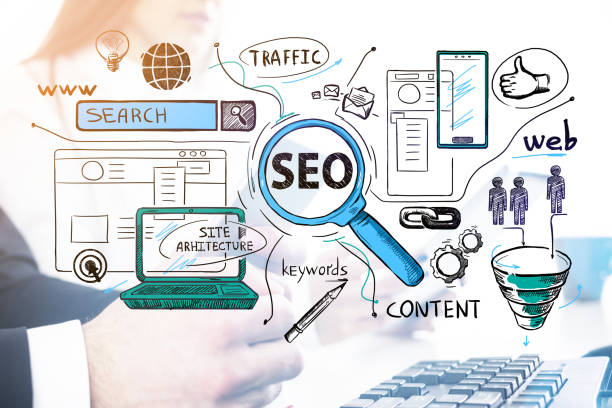
In the process of implementing an On-Page SEO strategy, many webmasters and business owners make mistakes that can nullify their efforts.
Understanding these mistakes and knowing how to prevent them can help you further improve your site’s performance.
One of the most common mistakes is Keyword Stuffing; that is, the excessive and unnatural use of keywords in content, which not only disrupts the user experience but is also recognized as a spam practice by search engines and penalized.
Another mistake is ignoring Search Intent; that is, producing content that does not answer the real needs of users who searched with a specific keyword.
Also, lack of image optimization (high size or not using Alt Text), ignoring site speed, and lacking a regular internal linking strategy are common errors.
Problems related to complex URLs, duplicate content, and not using Canonical Tags can also harm your On-Page SEO.
To avoid these mistakes, always focus on content quality and user experience, use keywords naturally and intelligently, keep your site technically optimized, and regularly monitor its performance.
This is an educational approach containing thought-provoking content that helps you identify and avoid potential errors on your On-Page SEO journey.
Do you know that customers’ first impression of your company is your website? Multiply your business’s credibility with a powerful corporate website from Rasawob!
✅ Custom and eye-catching design tailored to your brand
✅ Improved user experience and increased customer acquisition
⚡ Get a free consultation now!
Future Trends and Advanced Strategies in On-Page SEO
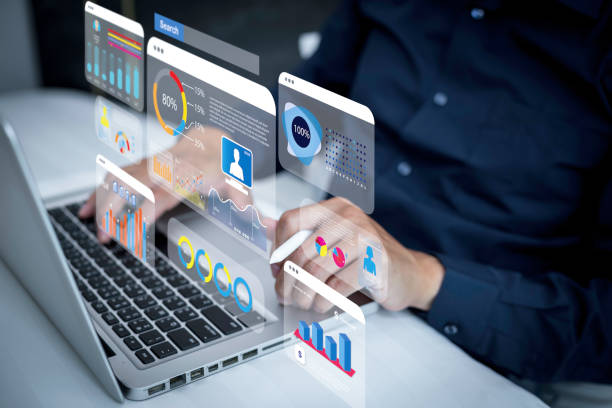
The world of SEO is constantly evolving, and On-Page SEO is no exception.
To stay ahead in this competition, you need to be familiar with future trends and adopt advanced strategies.
One of the most important trends is the increasing importance of Artificial Intelligence and Machine Learning in Google’s algorithms.
This means that search engines have become much smarter in understanding natural language and User Intent.
Therefore, producing comprehensive and high-quality content that answers various user questions in a given domain becomes even more critical.
Voice Search SEO is also growing with the expansion of voice assistants and should be paid attention to.
Optimizing for voice searches typically involves using more natural language and longer sentences.
Additionally, Structured Data (Schema Markup) has gained a more significant role in helping search engines deeply understand your content and display it in the form of Rich Snippets.
Google’s increased focus on Core Web Vitals (metrics related to actual user experience) has doubled the importance of page speed and visual stability.
This informative and specialized view of On-Page SEO shows how you should prepare for the future of your website optimization and, by adopting these advanced strategies, surpass your competitors and implement smart On-Page SEO.
Conclusion and the Importance of Continuous On-Page SEO Optimization
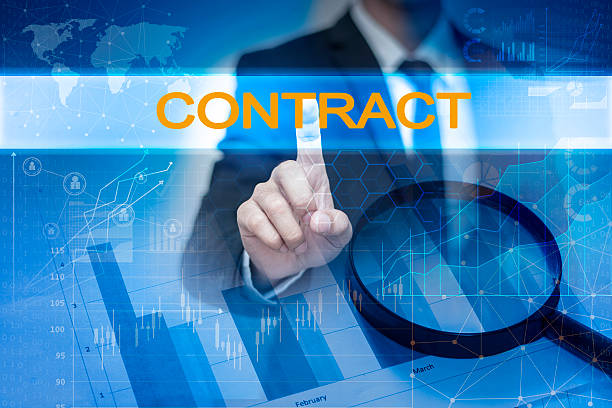
In conclusion, On-Page SEO is a vital and dynamic element in the success of any website.
It not only helps search engines understand and rank your content but also improves user experience and brings sustainable organic traffic to you.
From selecting appropriate keywords and optimizing content to technical issues like site speed and mobile responsiveness, every component of On-Page SEO plays a key role in your website’s overall success.
However, it’s important to understand that On-Page SEO is not a one-time process but an ongoing and evolving effort.
Search engine algorithms are constantly changing, and user behavior also transforms.
Therefore, continuous optimization, meticulous performance monitoring, and updating your strategies based on new data and trends are essential for maintaining and improving your site’s ranking in the long term.
By investing time and resources in strong On-Page SEO, you not only solidify your position in search results but also lay a strong foundation for the growth and online success of your business.
This comprehensive guide emphasizes that commitment to On-Page SEO is a sure path to visibility and success in the digital space.
Frequently Asked Questions
| Question | Answer |
|---|---|
| What is On-Page SEO? | On-Page SEO involves optimizing elements that are directly under your control and within your website. Its goal is to help search engines better understand page content and improve its ranking. |
| Why is On-Page SEO important? | On-Page SEO provides clear signals to search engines about page content, improves user experience, and increases the chance of attracting organic traffic. |
| What are the most important On-Page SEO factors? | Keywords, Title Tag, Meta Description, URL structure, quality content, image optimization, and internal links are among the most important factors. |
| What is the role of the Title Tag in On-Page SEO? | The title tag is one of the most important signals for search engines and users, specifying the main topic of the page. It should include the main keyword and be attractive. |
| How important is the Meta Description? | Meta descriptions do not directly impact ranking, but they can improve the click-through rate (CTR) by encouraging users to click. |
| How to optimize images for On-Page SEO? | By using a descriptive file name, appropriate Alt Text containing keywords, compression to reduce size, and correct dimensions. |
| What is the effect of Internal Links on SEO? | Internal links help search engines discover and index site pages, distribute authority (PageRank) across the site, and improve user navigation. |
| Is page loading speed an On-Page SEO factor? | Yes, page loading speed is a critical factor in On-Page SEO and user experience. Slower pages can lead to higher bounce rates and lower rankings. |
| What are the characteristics of quality content for On-Page SEO? | Quality content should be comprehensive, unique, relevant, trustworthy, readable, and fully answer users’ needs and questions. |
| How can keywords be used in content? | Keywords should be used naturally in titles, subheadings, the first paragraph, the body of the text, and image alt text. Avoid Keyword Stuffing. |
And other advertising services from Rasawob Advertising Agency
Smart UI/UX: Revolutionize sales growth by optimizing key pages.
Smart Marketplace: An effective tool for user interaction through attractive UI design.
Smart Direct Marketing: A professional solution to improve SEO ranking with a focus on attractive UI design.
Smart UI/UX: Professional optimization for digital branding using key page optimization.
Smart Google Ads: Professional optimization for campaign management using SEO-driven content strategy.
And over hundreds of other services in the field of internet advertising, advertising consultation, and organizational solutions
Internet Advertising | Advertising Strategy | Advertorial
Resources
Zhaket On-Page SEO Guide
On-Page SEO Strategies at 7learn
SEO Checklist from Parsivp
Top Results On-Page SEO Techniques
? To elevate your business in the digital world, Rasawob Afarin Digital Marketing Agency offers innovative and effective solutions. Are you looking for personal website design?
📍 Tehran, Mirdamad Street, next to Central Bank, Southern Kazeroun Alley, Ramin Alley, No. 6

